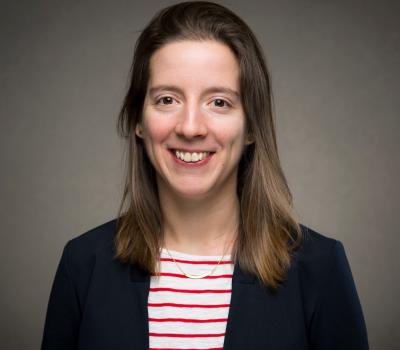Clotilde Pierson joined the faculty of the architectural engineering program at Oregon State University as a Culbertson Faculty Scholar in February 2022, bringing to the College of Engineering new expertise in daylighting and its effects on the built environment and its occupants.
Although she grew up in a family dedicated to the medical field, Pierson decided her calling lay elsewhere. However, the importance of helping people live healthier lives took root. Throughout her career, this value has been a constant — along with her fascination with architecture, which began during her teenage years.
“I grew very interested in how buildings influence their occupants, because we actually spend more than 90% of our time indoors,” Pierson said.
Pierson obtained her bachelor’s and master’s degrees from the University of Louvain, in her native Belgium. As a graduate student, she embraced the opportunity to study briefly at the Norwegian University of Science and Technology in Trondheim.
“At Trondheim, I became interested in sustainability in the built environment,” she said. “They had a very large course offering in the area of sustainability, and I decided to mix both my interests of how the building impacts occupants and this question of energy in the built environment.”

Pierson’s experience in Trondheim led her to return to Louvain to pursue a doctorate, studying passive strategies for the built environment — specifically, daylighting — and visual discomfort due to natural light. Because of its far northern latitude, Norway experiences stark shifts in the balance of light and darkness across the seasons. On summer nights, the skies may dim only briefly, but winters typically offer just a few hours of sunlight daily.
“I could experience for myself how strong an impact that had on my mood and on my comfort in the building, so that’s how I grew interested in daylight and decided to focus on that,” Pierson said.
Pierson’s doctoral research centered on how an individual’s social-environmental context (geographic climate, built environment, and other factors) affects their visual discomfort due to daylight. Her postdoctoral scholarship, at Eindhoven University of Technology in the Netherlands and at the Swiss Federal Institute of Technology–Lausanne in Switzerland, focused on nonvisual aspects of light — specifically, health effects.
“In our eye, we have this photoreceptor in charge of synchronizing our internal biological clock,” Pierson said. “The main indicator to entrain this clock to our 24-hour cycle is light. We evolved basically over hundreds of thousands of years through bright daylight environments. Over the past 200 years, we have slowly moved from fields to buildings. We are exposed daily to maybe 10% of the light we would get outdoors. Obviously, this has repercussions on our health.”
The United Nations predicts nearly 70% of the global population will reside in urban environments by 2050. This further motivates Pierson; such densely populated areas can further limit daylight exposure. During her postdoc at Lausanne, she relied on simulation studies to learn more about nonvisual effects of light. At Oregon State, she is excited to conduct laboratory and field studies as well.
“Using both simulations and occupant-based studies, we can better understand what is needed in terms of light in the built environment and think about solutions to actually meet our needs. That’s going to be one pillar of the research, testing and developing new strategies or new systems to bring daylight inside buildings,” Pierson said.
Ultimately, Pierson envisions students having access to two test rooms with flexible facades, which will act as controlled environments to conduct studies. The rooms will allow indoor daylight exposure to be manipulated for research purposes, and students can gain hands-on experience testing prototypes of daylighting systems they construct while directly experiencing the impact of their own designs. This, combined with the electric lighting laboratory led by Kevin Houser, professor of architectural engineering, will give students another advantage to become lighting experts.
“It’s a great way to develop contact with industry and to help students better understand or experience the daylighting environment,” Pierson said. “There is a growing lighting community in the Pacific Northwest, which is great for developing collaboration and studies with a larger impact.”
Working with industry partners should prove invaluable to architectural engineering students. Through these relationships, they could identify promising new areas of research motivated by the needs of local organizations. The experience will also likely enhance their career development. Some could find themselves fielding job offers from these same organizations once they graduate.
Pierson is excited to work with the architectural engineering faculty and more broadly with researchers from different fields at Oregon State, and she’s eager to meet her students and help foster their design interests and passions.




